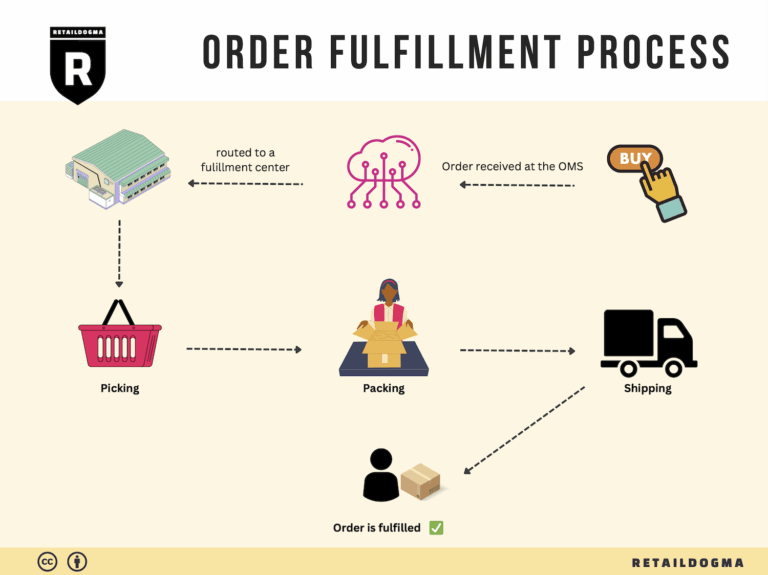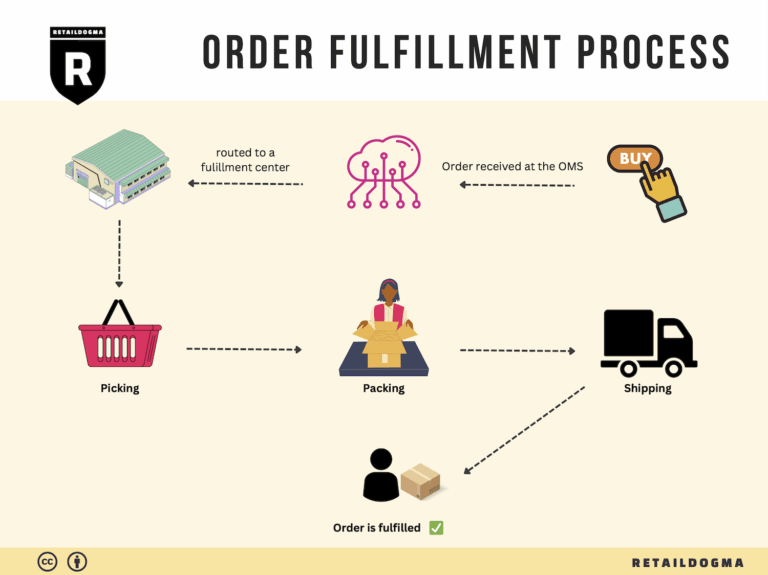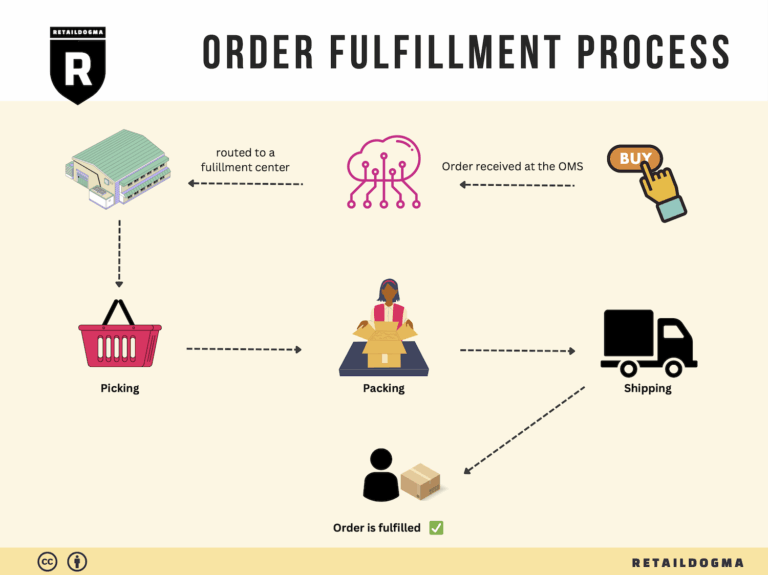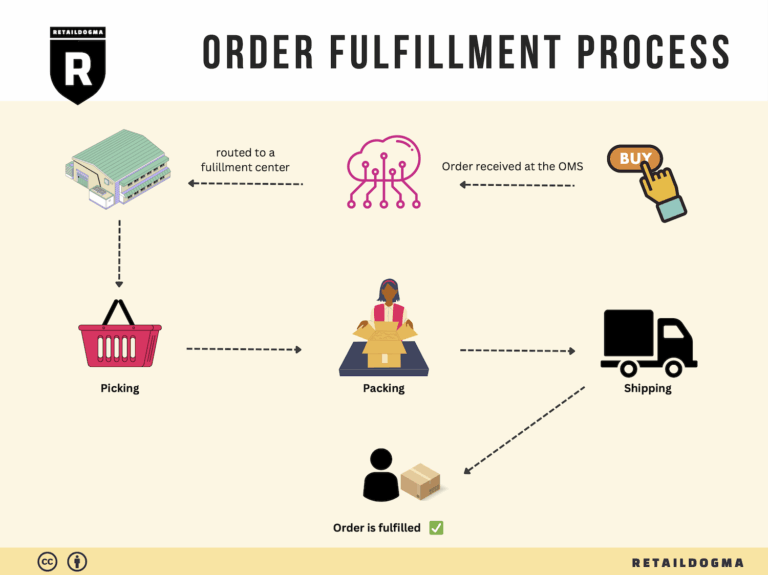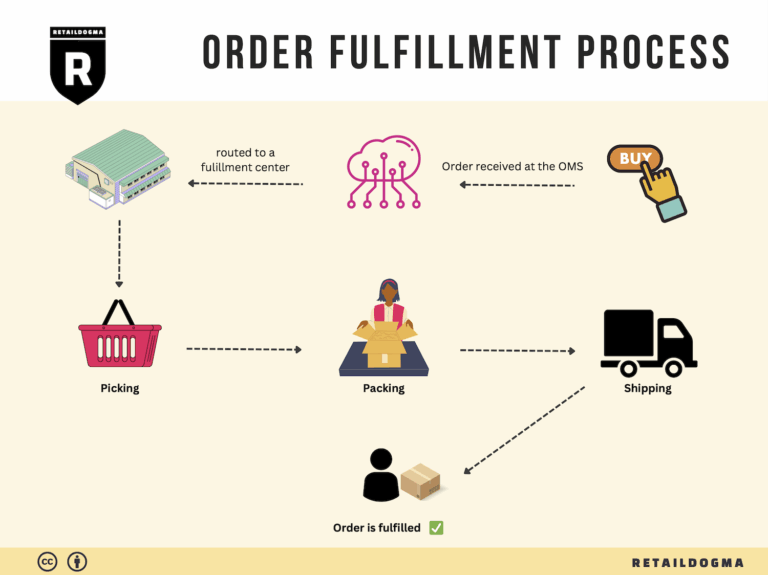What Is A Fulfillment Center? A Complete Guide (2025)
What is E-commerce Fulfillment? An Introduction for Growing Businesses
Understanding the Challenges of E-commerce Fulfillment
As an e-commerce business owner, you may find yourself grappling with a common pain point: the overwhelming task of packing and shipping orders. While your focus should ideally be on growing your sales and enhancing customer satisfaction, the operational demands of fulfilling orders can quickly become burdensome. This is where the concept of fulfillment comes into play. Simply put, fulfillment is the process of getting a product from your inventory to your customer’s doorstep, ensuring that it arrives on time and in excellent condition.
Defining Fulfillment Models
In today’s competitive landscape, understanding the different fulfillment models available is essential for scaling your operations efficiently. One popular option is Third-Party Logistics (3PL), where businesses outsource their warehousing and shipping needs to specialized providers. Alternatively, Fulfillment by Amazon (FBA) allows sellers to leverage Amazon’s vast network of fulfillment centers, including facilities like the MCI3 center in Liberty, Missouri, to store and ship their products. Each model has its unique benefits and challenges, making it crucial to evaluate which aligns best with your business goals.
Core Services of Fulfillment
Fulfillment services typically encompass a range of core functions, including inventory management, order processing, packing, shipping, and returns handling. A reliable fulfillment partner should not only streamline these processes but also provide transparency and tracking capabilities. This ensures that you can monitor your orders from the moment they leave your warehouse until they reach the customer, fostering trust and accountability.
Choosing the Right Fulfillment Partner
Selecting the right fulfillment partner is a critical decision that can significantly impact your bottom line. Consider factors such as their location, technology capabilities, scalability, and customer service. For example, a fulfillment center like MCI3, located strategically in Missouri, can enhance your shipping efficiency, especially if your customer base is concentrated in that region. Evaluate potential partners based on their ability to meet your specific needs and their reputation in the industry.
Pricing Considerations
Understanding the pricing structure of fulfillment services is vital for budgeting and forecasting. Costs can vary widely depending on the services offered, the complexity of your operations, and the volume of orders processed. Be sure to analyze all potential fees, including storage, handling, and shipping charges, to ensure that you’re making an informed decision.
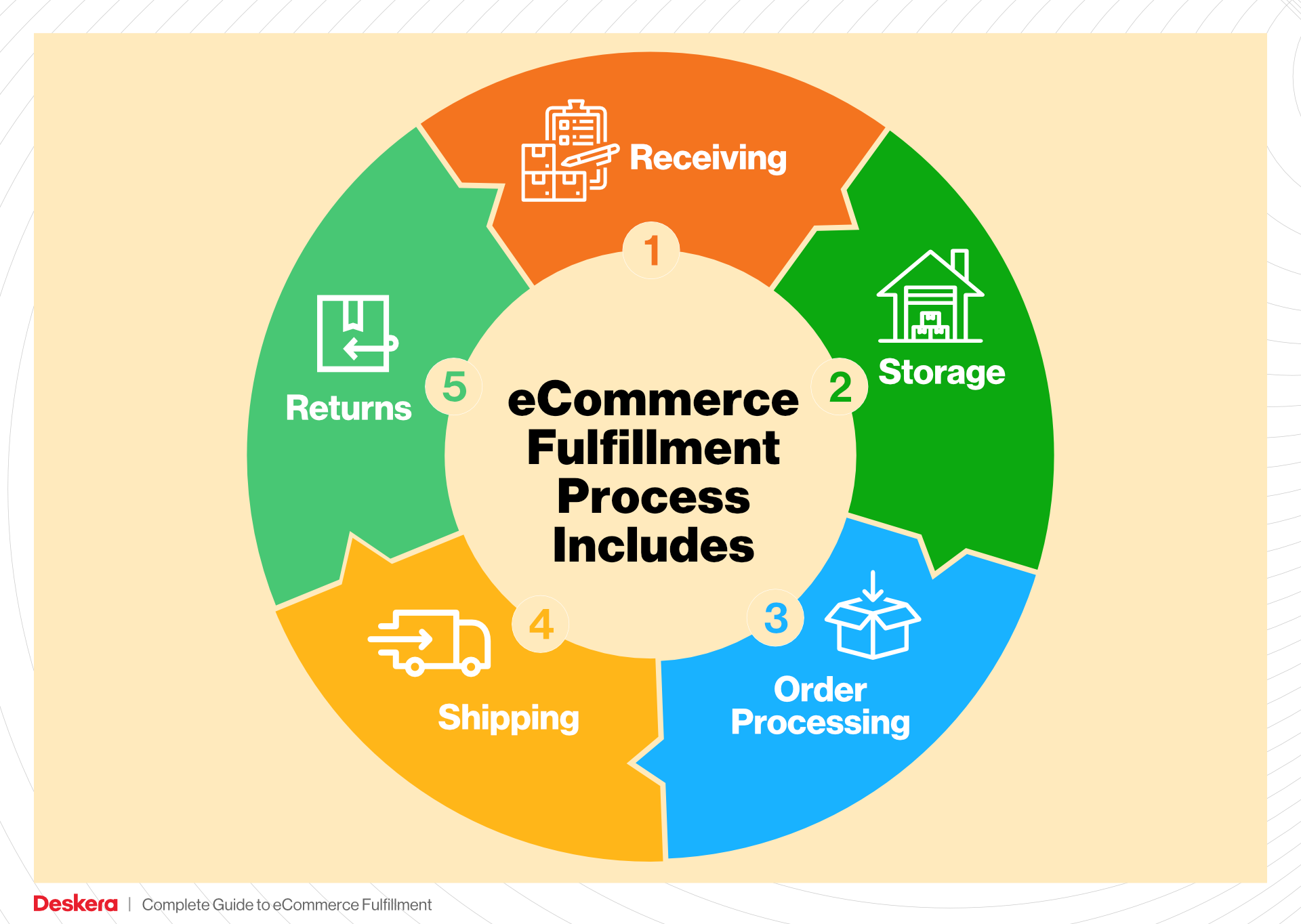
Empowering Your Logistics Decisions
This guide aims to empower you as a growing business to make informed and strategic decisions about your logistics and fulfillment needs. By exploring various models, core services, and partner evaluation criteria, you will be better equipped to optimize your operations and scale your e-commerce business effectively.
What You’ll Learn In This Guide
- What is E-commerce Fulfillment? An Introduction for Growing Businesses
- The Order Fulfillment Process: From ‘Buy’ Button to Customer’s Door
- Comparing Fulfillment Models: In-House vs. 3PL vs. Dropshipping
- A Deep Dive into Amazon FBA: Pros, Cons, and Who It’s For
- Core Services Offered by Fulfillment Centers
- How to Choose a Fulfillment Partner: A 6-Point Checklist
- Understanding Fulfillment Pricing: A Breakdown of Common Fees
- Frequently Asked Questions (FAQs) about Fulfillment
- Conclusion: Is Outsourcing Fulfillment the Right Move for Your Business?
- Important Disclaimer
The Order Fulfillment Process: From ‘Buy’ Button to Customer’s Door
1. Receiving Inventory
The first step in the order fulfillment process is receiving inventory. This is where products are delivered to the warehouse from manufacturers or suppliers. Upon arrival, each shipment is checked for accuracy against purchase orders to ensure that the correct items and quantities are received. This involves inspecting the goods for any damage and verifying that the shipments match the expected inventory counts.
Importance: Efficient receiving processes are crucial as they establish the foundation for all subsequent steps in fulfillment. Accurate inventory receipt helps maintain stock accuracy and prevents issues later in the supply chain.
Key Term: SKU (Stock Keeping Unit) – A unique identifier for each product that helps track inventory levels and sales performance.
2. Warehouse Storage
Once inventory is received and verified, it is moved to designated storage areas within the warehouse. Proper organization is essential, as it impacts the efficiency of the picking process. Products are often stored based on various criteria, including size, weight, and demand frequency. Utilizing a systematic storage method such as FIFO (First In, First Out) or LIFO (Last In, First Out) can also help manage perishable or time-sensitive items.
Importance: Effective warehouse storage maximizes space utilization and minimizes the time spent locating products during order picking. A well-organized warehouse leads to faster processing times and improved overall productivity.
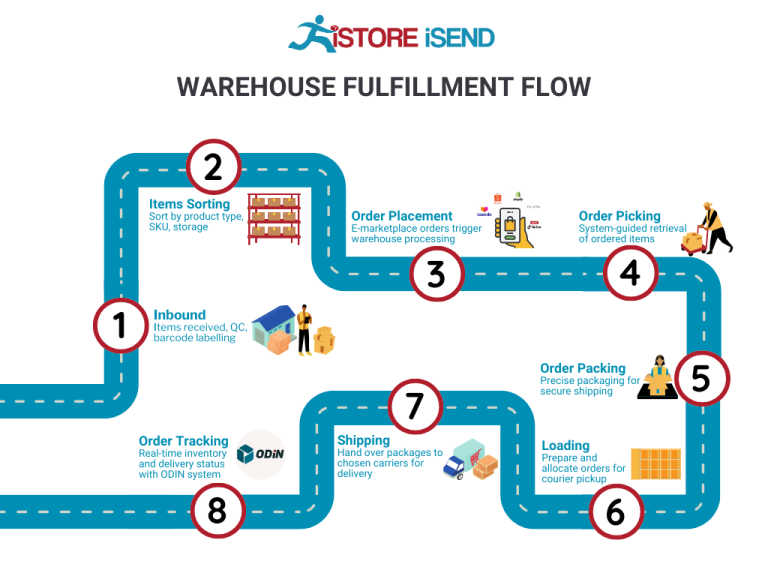
Key Term: ABC Analysis – A method of categorizing inventory based on importance and turnover rates, which helps prioritize storage locations.
3. Order Picking
Order picking is the process of retrieving items from their storage locations to fulfill customer orders. Warehouse staff use pick lists—documents that outline the items needed for each order, including their locations—to efficiently gather products. This step may employ various picking methods such as single-order picking, batch picking, or wave picking, depending on the volume and nature of the orders.
Importance: The accuracy and speed of order picking directly affect customer satisfaction. Mistakes in picking can lead to incorrect shipments, resulting in returns and potential loss of customer trust. Therefore, optimizing this process is vital for operational efficiency.
Key Term: Pick Lists – Documents or digital records that guide warehouse staff on which items to retrieve for fulfilling customer orders.
4. Order Packing
After items are picked, they move to the packing station where they are prepared for shipment. Packing involves placing products into appropriate packaging materials to ensure they arrive safely at the customer’s location. This may include adding protective materials, labeling, and including packing slips or invoices. Automation can enhance this process through the use of packing machines that optimize box sizes and reduce material waste.
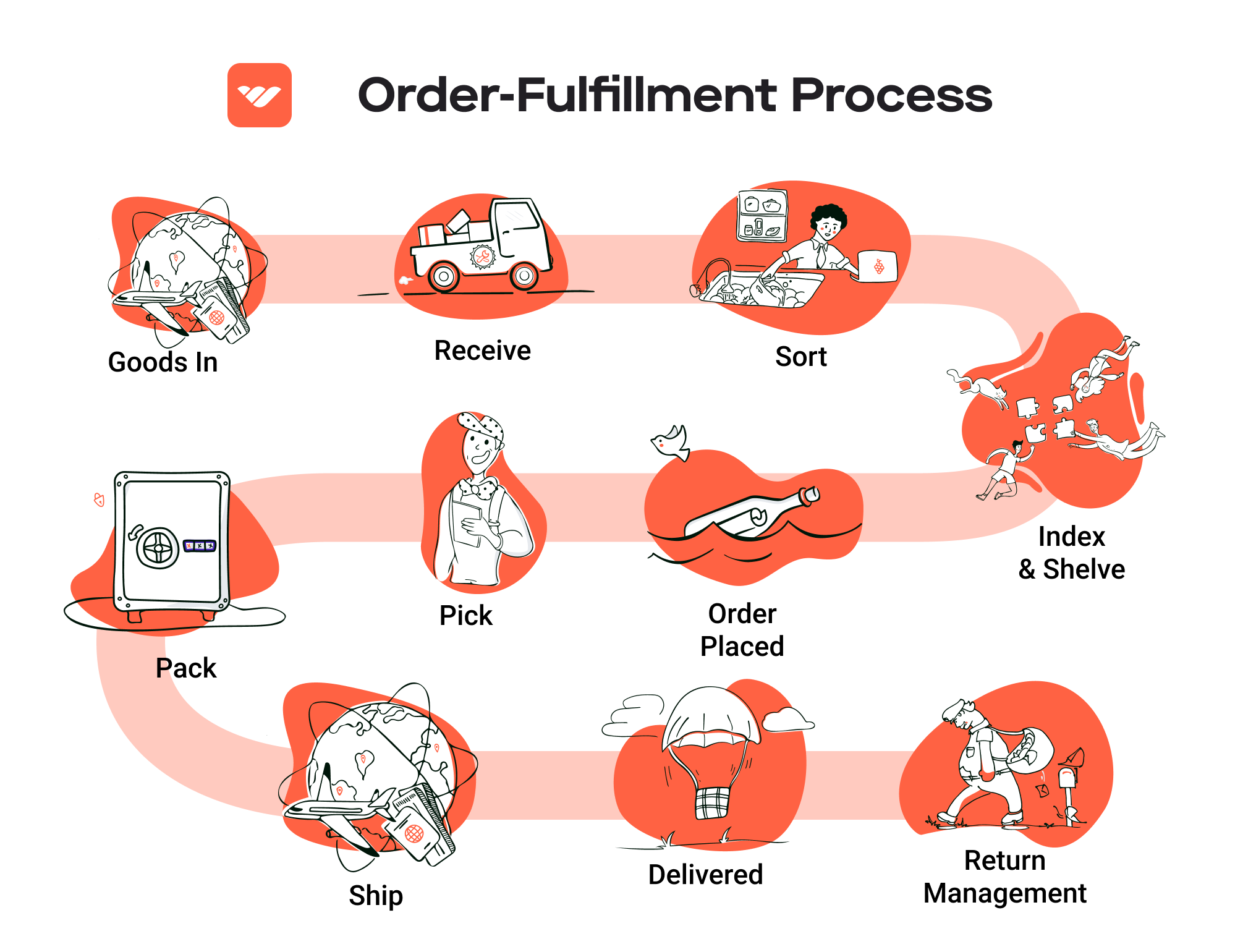
Importance: Proper packing is critical to prevent damage during transit and to enhance the unboxing experience for customers. It also ensures compliance with shipping regulations and can help reduce return rates due to damaged goods.
Key Term: Packaging Optimization – The process of selecting the right packaging materials and dimensions to minimize costs and environmental impact while ensuring product safety.
5. Shipping & Delivery
The final step in the order fulfillment process is shipping and delivery. Once orders are packed, they are labeled and sorted for shipment. Depending on the fulfillment model, orders may be shipped directly to customers or routed through sortation centers for more efficient delivery. This stage also involves choosing the right carriers and shipping methods to balance cost and speed.
Importance: Timely and accurate shipping is crucial for customer satisfaction and retention. The speed of delivery can significantly influence a customer’s perception of a brand, especially in an era where fast shipping is increasingly expected.
Key Term: Last-Mile Delivery – The final step in the shipping process where the package is delivered from a transportation hub to the final destination, often representing the most complex and costly part of the logistics chain.
By understanding and optimizing each of these steps in the order fulfillment process, e-commerce businesses can enhance operational efficiency, improve customer satisfaction, and ultimately scale their logistics effectively.
Comparing Fulfillment Models: In-House vs. 3PL vs. Dropshipping
Fulfillment Model Comparison
| Model | Who Handles Inventory | Best For (Business Stage) | Key Advantage | Key Disadvantage |
|---|---|---|---|---|
| In-House Fulfillment | The business itself | Established businesses | Full control over inventory and operations | High overhead costs and complexity |
| Third-Party Logistics (3PL) | A third-party provider | Growing businesses | Cost-effective scalability and expertise | Less control over logistics and potential delays |
| Dropshipping | Supplier | Startups or niche products | Low upfront investment and minimal risk | Lower profit margins and reliance on suppliers |
In-House Fulfillment
In-house fulfillment refers to the process where a business manages its own inventory, order processing, and shipping operations. This model is most suitable for established businesses that have the capital and resources to invest in warehousing, staff, and logistics technology. The key advantage of in-house fulfillment is the complete control it offers over inventory management, order accuracy, and customer service. Businesses can implement tailored processes, ensure quality control, and maintain direct oversight of their operations, which can lead to enhanced customer satisfaction.
However, managing fulfillment in-house also comes with significant challenges. The overhead costs can be substantial, as businesses must invest in warehouse space, inventory, staffing, and technology. Additionally, handling logistics internally can become complex, particularly during peak seasons or sudden spikes in demand. This complexity can strain resources and lead to inefficiencies if not managed properly. Therefore, while in-house fulfillment provides control and customization, it requires a solid operational foundation and a willingness to invest in infrastructure.
Third-Party Logistics (3PL)
Third-party logistics (3PL) providers offer businesses a way to outsource their fulfillment operations. In this model, a company partners with a 3PL provider that handles inventory management, warehousing, order processing, and shipping. This option is particularly advantageous for growing businesses that need to scale without the burden of managing logistics. The key benefits include cost-effective scalability, access to specialized expertise, and the ability to leverage advanced logistics technology without significant investment.
One of the main drawbacks of using a 3PL is the potential loss of control over logistics and fulfillment processes. Businesses must rely on their 3PL partners to manage inventory accuracy, shipping times, and customer service, which can lead to challenges if the provider does not meet expectations. Additionally, communication and coordination with the 3PL can be complex, especially if the provider is located far from the business’s customer base. Therefore, while 3PLs can facilitate growth and efficiency, businesses must choose their partners carefully and maintain clear communication to mitigate risks.
Dropshipping
Dropshipping is a fulfillment model where a business sells products without holding any inventory. Instead, when a customer places an order, the business purchases the item from a supplier, who then ships it directly to the customer. This model is particularly well-suited for startups or businesses that focus on niche products, as it requires a low upfront investment and minimal risk. The primary advantage of dropshipping is that businesses can test new products and markets without the financial burden of inventory management.
However, dropshipping also comes with significant disadvantages. Profit margins tend to be lower compared to other fulfillment models, as businesses often pay retail prices to suppliers. Additionally, reliance on suppliers for inventory and shipping can lead to inconsistencies in order fulfillment, which may negatively impact customer satisfaction. Businesses must also consider potential delays and the quality of products shipped, as they have limited control over these factors. Overall, while dropshipping can be a low-risk entry into e-commerce, it requires careful supplier selection and management to succeed.
Conclusion
In conclusion, each fulfillment model presents unique advantages and disadvantages that cater to different business needs and stages. In-house fulfillment offers control but requires substantial investment and operational expertise. Third-party logistics provide scalability and expertise at the cost of some control, while dropshipping allows for low-risk entry into the market but typically results in lower profit margins. E-commerce business owners must carefully assess their operational capabilities, growth plans, and customer expectations when choosing the most suitable fulfillment model for their business.
A Deep Dive into Amazon FBA: Pros, Cons, and Who It’s For
Understanding Fulfillment by Amazon (FBA)
Fulfillment by Amazon (FBA) is a service offered by Amazon that allows sellers to store their products in Amazon’s fulfillment centers. Amazon takes care of storage, packaging, and shipping on behalf of the sellers. This model provides sellers with a streamlined logistics process while leveraging Amazon’s vast distribution network and customer trust. Here’s how it works:
-
Product Preparation: Sellers prepare their products according to Amazon’s guidelines. This includes labeling and packaging the items appropriately.
-
Shipping to Amazon: Once the products are prepared, sellers ship them to Amazon’s fulfillment centers. This can be done directly by the seller or through third-party logistics providers.
-
Storage: The products are stored in Amazon’s warehouses until they are sold. Sellers are charged storage fees based on the amount of space their products occupy.
-
Order Fulfillment: When a customer places an order, Amazon picks, packs, and ships the products directly to the customer. This includes managing returns and customer service.
-
Customer Experience: Products fulfilled through FBA are eligible for Amazon Prime, which can significantly increase sales due to the appeal of fast, free shipping.
Pros of Using FBA
Prime Eligibility
One of the most significant advantages of FBA is that it qualifies products for Amazon Prime. This not only enhances visibility but also attracts millions of Prime members who are more likely to purchase items that offer free and expedited shipping.
Customer Trust
Selling through Amazon’s platform inherently builds trust with customers. Amazon’s reputation for reliability and customer service can enhance the credibility of your products, leading to higher conversion rates.
Multi-Channel Fulfillment
FBA is not limited to Amazon sales alone. Sellers can utilize FBA to fulfill orders from other sales channels, such as their own websites or other e-commerce platforms. This flexibility allows for a more centralized logistics process.
Inventory Management
FBA provides sellers with a robust inventory management system. Amazon handles stock levels, reorders, and logistics, allowing sellers to focus more on other aspects of their business, such as marketing and product development.
Simplified Returns
Amazon manages returns for FBA products, providing a seamless experience for customers. This can lead to increased customer satisfaction and repeat business.
Cons of Using FBA
High Fees
While FBA offers numerous benefits, the costs can add up. Sellers incur storage fees based on the volume of their products, as well as fulfillment fees for each item sold. These costs can significantly impact profit margins, particularly for lower-priced items.
Strict Inventory Rules
Amazon has stringent policies regarding inventory management, including requirements for labeling, packaging, and storage. Failing to comply can result in additional fees or even the removal of products from the platform.
Commingling Risks
With FBA, products from different sellers can be stored together. This commingling can pose risks, such as potential mix-ups with inventory or receiving damaged goods. Sellers may face challenges in tracking the exact condition and origin of their products.
Limited Control
Using FBA means relying on Amazon for fulfillment, which can limit a seller’s control over the shipping process and customer experience. Sellers may find it challenging to manage specific branding elements, such as packaging.
Inventory Management Challenges
While FBA simplifies many aspects of logistics, it can also complicate inventory management. Sellers must keep track of stock levels at Amazon’s warehouses and ensure they meet demand without overstocking, which incurs additional fees.
Who is FBA Best For?
Fulfillment by Amazon is particularly well-suited for:
-
Small to Medium-Sized Businesses: Businesses without the infrastructure to manage their logistics can benefit from Amazon’s extensive network and expertise.
-
New Sellers: Entrepreneurs just starting in e-commerce can leverage FBA to gain immediate access to Amazon’s customer base and fulfillment capabilities.
-
Sellers with High Turnover: Businesses with products that have high sales velocity can offset FBA fees through increased sales and visibility.
-
Brands Looking for Exposure: For brands that want to enhance their online presence and trustworthiness, FBA provides a powerful platform to reach a broader audience.
-
Multi-Channel Sellers: Businesses that sell on multiple platforms can benefit from FBA’s multi-channel fulfillment capabilities, allowing them to streamline their logistics under one umbrella.
In conclusion, while Fulfillment by Amazon offers significant advantages, it also comes with challenges that sellers need to consider. Businesses must assess their product types, sales strategies, and operational capabilities to determine if FBA aligns with their goals. By understanding the pros and cons, sellers can make informed decisions that will help them scale their operations effectively.
Core Services Offered by Fulfillment Centers
Inventory Management & Warehousing
Inventory management and warehousing are fundamental services provided by fulfillment centers that ensure e-commerce businesses maintain optimal stock levels while efficiently utilizing space. Fulfillment centers employ sophisticated inventory management systems that track stock levels in real-time, allowing businesses to monitor their inventory without the need for manual checks.
Benefits:
-
Improved Accuracy: Automated systems reduce human error, ensuring that inventory counts are accurate. This precision helps businesses avoid stockouts or overstock situations, both of which can be costly.
-
Space Optimization: Fulfillment centers utilize advanced storage solutions to maximize warehouse space. This means businesses can store more products without needing to invest in additional real estate.
-
Scalability: As an e-commerce business grows, its inventory needs can fluctuate. Fulfillment centers offer flexible warehousing options, allowing businesses to scale their inventory up or down based on demand.
-
Cost-Effective: By outsourcing inventory management and warehousing, businesses can reduce overhead costs associated with maintaining their own facilities and staff. This allows them to focus resources on growth and marketing strategies.
Pick and Pack Services
Pick and pack services involve the process of selecting (picking) ordered items from inventory and then packing them for shipment to customers. Fulfillment centers streamline this process using technology and trained staff to ensure efficiency and accuracy.
Benefits:
-
Speed and Efficiency: Fulfillment centers are designed to process orders quickly. With organized shelving and automated systems, they can fulfill orders faster than many in-house operations, leading to shorter delivery times for customers.
-
Quality Control: Many fulfillment centers implement quality control measures during the pick and pack process. This ensures that the correct items are picked and packed properly, reducing the likelihood of returns and enhancing customer satisfaction.
-
Cost Savings: By outsourcing pick and pack services, businesses can save on labor costs. Fulfillment centers typically have lower operational costs due to their scale and efficiency, allowing businesses to benefit from economies of scale.
-
Focus on Core Activities: By handing over the logistics of order fulfillment, e-commerce businesses can concentrate on their core activities, such as product development, marketing, and customer engagement, leading to overall business growth.
Kitting and Assembly
Kitting and assembly refer to the process of combining multiple products into a single package or creating customized product bundles. Fulfillment centers often provide this service, which can be crucial for businesses offering subscription boxes, promotional kits, or bundled products.
Benefits:
-
Customization: Kitting allows businesses to offer personalized product bundles that cater to specific customer needs or preferences. This can enhance customer loyalty and increase average order value.
-
Reduced Shipping Costs: By consolidating items into one package, businesses can often save on shipping costs. Fewer packages mean lower shipping fees and a more streamlined delivery process.
-
Time Savings: Outsourcing kitting and assembly to a fulfillment center saves businesses time. The center’s trained staff can efficiently assemble kits, allowing businesses to focus on other strategic initiatives.
-
Enhanced Inventory Management: Kitting can help in managing inventory more effectively. Instead of tracking each item separately, businesses can manage bundles as single units, simplifying inventory processes.
Returns Management (Reverse Logistics)
Returns management, or reverse logistics, is a critical service offered by fulfillment centers that handle the return of products from customers back to the seller. This process includes receiving, inspecting, restocking, or disposing of returned items.
Benefits:
-
Streamlined Process: Fulfillment centers have established processes for handling returns, which can often be a headache for e-commerce businesses. This includes tracking returns and updating inventory levels promptly.
-
Customer Satisfaction: Efficient returns management enhances customer experience. A hassle-free return process can lead to higher customer retention rates and positive reviews, which are essential for long-term success.
-
Cost Management: By utilizing a fulfillment center’s returns management service, businesses can reduce the costs associated with handling returns internally. The center’s expertise often leads to better recovery of returned inventory and reduced losses.
-
Data Insights: Fulfillment centers can provide valuable insights into return trends, helping businesses understand why products are returned. This information can inform product development, quality control, and marketing strategies, ultimately reducing future returns.
In conclusion, leveraging the core services offered by fulfillment centers, such as inventory management and warehousing, pick and pack services, kitting and assembly, and returns management, can significantly enhance the operational efficiency of e-commerce businesses. By outsourcing these functions, businesses can focus on scaling their sales and improving customer satisfaction, ultimately driving growth in a competitive marketplace.
How to Choose a Fulfillment Partner: A 6-Point Checklist
Location & Warehouse Network
Importance: The geographical location of your fulfillment partner’s warehouses can significantly impact shipping costs and delivery times. Proximity to your customer base not only improves service levels but can also reduce shipping expenses.
Questions to Ask:
– Where are your fulfillment centers located, and how do they align with our customer demographics?
– What is your average shipping time to our key markets?
– Do you have a strategy for expanding your warehouse network as our needs grow?
Technology & Integrations
Importance: In today’s e-commerce landscape, technology plays a crucial role in streamlining operations. A fulfillment partner that utilizes advanced technology can enhance order accuracy, inventory management, and overall operational efficiency.
Questions to Ask:
– What warehouse management system (WMS) do you use, and how does it integrate with our existing systems (e.g., e-commerce platforms, ERP software)?
– Can you provide real-time tracking and reporting features?
– How do you handle inventory management and stock replenishment?
Specializations (e.g., Cold Storage, Oversized Items)
Importance: Different businesses have unique needs based on their product types. If you sell perishable goods or oversized items, it’s essential to partner with a fulfillment center that specializes in handling these products.
Questions to Ask:
– Do you have experience managing products similar to ours (e.g., food items, large furniture)?
– What specific capabilities do you offer for specialized storage needs, such as temperature-controlled environments?
– How do you ensure compliance with industry regulations for specialized items?
Scalability & Capacity
Importance: As your business grows, your fulfillment partner must be able to scale operations accordingly. Understanding their capacity to handle fluctuations in order volume is crucial for maintaining service levels during peak seasons.
Questions to Ask:
– What is your current capacity for handling orders, and how do you manage peak seasons?
– Can you provide a plan for scaling operations in response to our growth?
– How do you handle unexpected spikes in order volume?
Pricing and Contracts
Importance: Understanding the pricing structure and contract terms is vital for budgeting and financial planning. Transparency in pricing can help avoid unexpected costs and ensure a good return on investment.
Questions to Ask:
– Can you provide a detailed breakdown of your pricing model (e.g., storage fees, pick-and-pack fees, shipping costs)?
– Are there any additional costs we should be aware of, such as penalties for low order volume or long-term contract commitments?
– What is the minimum contract length, and what are the terms for cancellation or changes?
Customer Support & Reviews
Importance: Quality customer support can make a significant difference in your overall satisfaction and operational success. A responsive partner is critical for addressing issues promptly and ensuring smooth operations.
Questions to Ask:
– What level of customer support do you offer (e.g., dedicated account manager, 24/7 support)?
– How do you handle issues or discrepancies with orders?
– Can you provide references or case studies from businesses similar to ours?
Conclusion
Choosing the right fulfillment partner is a pivotal decision that can influence your business’s growth trajectory. By carefully evaluating potential partners using this checklist, you can ensure that your logistics operations align with your business goals and customer expectations. Take the time to ask these critical questions and assess each partner’s offerings thoroughly to find the best fit for your e-commerce needs.
Understanding Fulfillment Pricing: A Breakdown of Common Fees
Initial Setup Fees
Initial setup fees are often the first costs e-commerce businesses encounter when partnering with a fulfillment center. These fees cover the administrative and logistical groundwork necessary to integrate your inventory into the fulfillment system. Charges can vary significantly based on the complexity of your operations and the fulfillment provider’s infrastructure.
Typical components of initial setup fees include:
- Account Setup: Establishing your account within the fulfillment center’s system.
- Inventory Integration: Costs associated with integrating your inventory management system with the fulfillment provider’s technology.
- Training Costs: If you require training on using their platform or processes, this might incur additional fees.
To calculate these fees, fulfillment centers often consider the number of SKUs (Stock Keeping Units) and the level of customization required for your operations. It’s advisable to clarify all initial fees upfront to avoid unexpected charges later.
Receiving Fees
Receiving fees are charged when your inventory arrives at the fulfillment center. These fees cover the labor and resources needed to unload, inspect, and store your products.
Receiving fees typically include:
- Unloading Costs: Labor costs for unloading inventory from shipping containers or trucks.
- Inspection Costs: Fees for checking the quality and quantity of the received goods.
- Labeling and Sorting Fees: If your products require labeling or sorting before storage, this may incur additional charges.
These fees are usually calculated per pallet or by the weight of the shipment, depending on the fulfillment center’s pricing model. Understanding how your inventory will be received can help you budget for these costs effectively.
Storage Fees (per pallet/bin)
Storage fees apply to the space your inventory occupies in the fulfillment center. These fees can vary based on the size of your products and the duration they remain in storage.
Key factors influencing storage fees include:
- Pallet vs. Bin Storage: Charges may differ if your products are stored on pallets compared to smaller bins.
- Monthly Rates: Fulfillment centers typically charge monthly, calculated based on the volume of space your inventory occupies.
- Seasonal Variations: Many providers adjust storage fees during peak seasons (e.g., holiday periods) due to increased demand for storage space.
To estimate storage costs, consider the size and turnover rate of your inventory. High turnover rates may minimize storage fees as products move quickly out of the warehouse.
Pick & Pack Fees (per item/order)
Pick and pack fees are incurred each time an order is processed. These fees cover the labor and resources required to pick the items from the shelves, pack them appropriately, and prepare them for shipment.
Components of pick and pack fees include:
- Picking Costs: Charges for locating and retrieving items from storage.
- Packing Costs: Fees for packing materials (boxes, bubble wrap, etc.) and labor associated with packing orders.
- Order Complexity: More complex orders that require multiple items or special packing instructions may incur higher fees.
Fulfillment centers typically charge per item or per order. Understanding your average order size and frequency can help you estimate these costs effectively.
Shipping Fees
Shipping fees are perhaps the most variable costs associated with fulfillment services. They encompass the charges incurred to send products from the fulfillment center to your customers. Factors affecting shipping fees include:
- Shipping Method: Costs vary based on whether you choose standard, expedited, or same-day shipping.
- Destination: Shipping fees can differ significantly based on the delivery location (domestic vs. international).
- Carrier Rates: Each fulfillment center may have different agreements with shipping carriers, which can influence the final shipping cost.
Shipping fees are typically calculated based on the weight and dimensions of the package and the distance it must travel. To optimize your shipping expenses, consider discussing different shipping options and rates with your fulfillment partner.
Tips for Getting an Accurate Quote
-
Provide Detailed Information: When seeking quotes, provide potential fulfillment partners with detailed information about your product types, average order size, and expected volume. This transparency helps them generate more accurate estimates.
-
Ask About Additional Fees: Inquire about any potential hidden fees that may not be included in the initial quote, such as handling fees or charges for returns.
-
Negotiate Terms: Don’t hesitate to negotiate terms, especially if you expect high order volumes. Many fulfillment centers are willing to offer discounts for larger commitments.
-
Review Contract Terms Carefully: Before signing any agreements, carefully review all terms and conditions related to pricing. Ensure you understand how fees are structured and what circumstances may lead to changes.
-
Consider Seasonal Adjustments: If you anticipate seasonal spikes in sales, discuss how your fulfillment partner adjusts pricing during peak periods. This foresight can help you budget accordingly.
By understanding these common fulfillment pricing models and following these tips, you can effectively manage your logistics costs and scale your e-commerce operations efficiently.
Frequently Asked Questions (FAQs) about Fulfillment
1. What is the Amazon Fulfillment Center MCI3?
The Amazon Fulfillment Center MCI3 is a state-of-the-art facility located in Liberty, Missouri, covering an area of approximately 1.6 million square feet. Opened in March 2023, it is designed to efficiently handle order processing, inventory management, and shipping operations using advanced robotic technology.
2. What types of products are processed at MCI3?
MCI3 handles a wide range of products, from electronics and household goods to clothing and personal care items. The center is equipped to manage both large and bulky items, ensuring that a diverse inventory can be stored and shipped to meet customer demands.
3. What are the operational hours of MCI3?
MCI3 operates 24/7 to ensure continuous processing and shipping of orders. This round-the-clock operation allows Amazon to maintain its promise of quick delivery times, especially during peak seasons.
4. How does MCI3 differ from other Amazon facilities?
MCI3 is primarily a fulfillment center, focusing on picking, packing, and shipping orders directly to customers. In contrast, sortation centers and delivery stations serve different roles, such as sorting packages for delivery routes or dispatching them to local delivery drivers.
5. What is the role of robotics in MCI3?
Robotics play a crucial role in increasing efficiency at MCI3. Automated systems assist with inventory management, order picking, and packaging, which significantly reduces processing times and minimizes human error.
6. How much does it cost to use Amazon fulfillment services?
Costs for using Amazon fulfillment services can vary based on several factors, including the size and weight of products, storage duration, and shipping destinations. Generally, sellers can expect to pay fulfillment fees ranging from $2.50 to $5.00 per unit, plus monthly storage fees that start at $0.75 per cubic foot for standard-size items.
7. What is a 3PL, and how does it relate to MCI3?
A 3PL, or third-party logistics provider, is a company that manages logistics and fulfillment services on behalf of other businesses. While MCI3 is an Amazon-operated fulfillment center, businesses can choose to partner with 3PLs to leverage their logistics capabilities alongside Amazon’s services for broader distribution options.
8. How can businesses benefit from using MCI3 for fulfillment?
Businesses can benefit from MCI3’s fulfillment services by gaining access to Amazon’s vast logistics network, reducing shipping times, and enhancing customer satisfaction. Additionally, leveraging Amazon’s technology and expertise can allow businesses to scale operations without significant investment in their own fulfillment infrastructure.
9. What are the employment opportunities at MCI3?
MCI3 offers a variety of employment opportunities, including positions in inventory management, order fulfillment, and logistics operations. Employees typically earn competitive wages, starting at around $17 per hour, and are eligible for benefits such as medical insurance and paid leave.
10. What challenges do businesses face when using fulfillment centers like MCI3?
While using fulfillment centers like MCI3 offers many advantages, businesses may face challenges such as fluctuating fees, potential stock shortages during peak seasons, and dependency on Amazon’s operational standards. Additionally, maintaining product quality and ensuring customer satisfaction can be complex, particularly during high-demand periods.
Conclusion: Is Outsourcing Fulfillment the Right Move for Your Business?
Evaluating the Benefits of Outsourcing Fulfillment
As e-commerce continues to evolve, the decision to outsource fulfillment can significantly impact your business’s efficiency and growth trajectory. Partnering with a fulfillment service, such as Amazon’s MCI3 Fulfillment Center, offers several key advantages that can help streamline operations.
1. Time Savings: One of the most immediate benefits of outsourcing fulfillment is the time saved in managing logistics. By allowing a third-party provider to handle storage, packing, and shipping, you can focus on core business activities such as marketing, product development, and customer engagement. This shift can lead to enhanced productivity and a more agile response to market changes.
2. Scalability: As your business grows, so too do your logistical challenges. A fulfillment partner provides the flexibility to scale operations up or down based on demand fluctuations. This adaptability is crucial during peak seasons or unexpected surges in orders, ensuring that your business can meet customer expectations without the burden of overextending internal resources.
3. Expertise and Technology: Fulfillment centers often utilize advanced technology and industry best practices that may be beyond the reach of small to mid-sized businesses. By leveraging their expertise, you gain access to sophisticated inventory management systems, optimized shipping processes, and data analytics that can improve operational efficiency and customer satisfaction.
While the benefits are clear, choosing the right fulfillment partner is paramount. The ideal partner should align with your business goals, offer reliable services, and maintain high standards for inventory handling and customer service.
Call to Action: To determine if outsourcing fulfillment is the right step for your business, conduct an audit of your current shipping processes. Evaluate your operational efficiency, costs, and customer satisfaction levels. This analysis will help clarify whether a fulfillment partner can drive your business growth and enhance your service delivery.
Important Disclaimer
⚠️ Important Disclaimer
The information in this guide is for educational purposes. Fulfillment services, pricing, and platform features change frequently. Always conduct your own due diligence and consult with providers directly before making business decisions.

